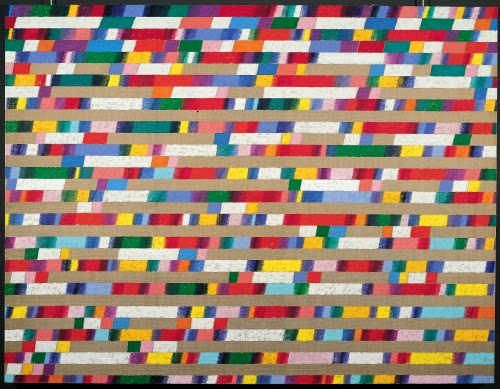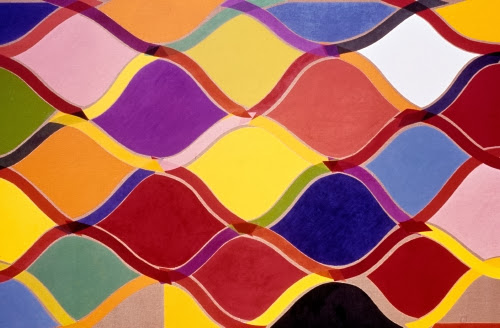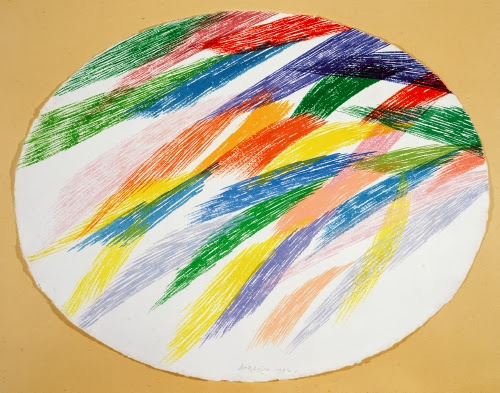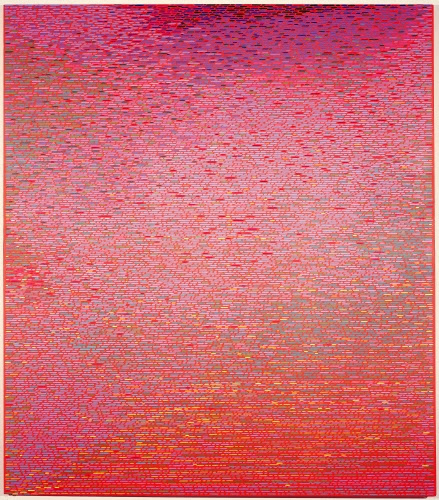Color for a Winter Cheer Up: Piero Dorazio
What better way to enhance the long winter chill than to look at COLOR!
 |
| Piero Dorazio (1927–2005, Italy/United States), Raw Spectrum, 1978. Oil on linen, 6' 5" x 8' 6" (200 x 260 cm). Albright-Knox Art Gallery, Buffalo, NY. © 2014 Piero Dorazio / Artists Rights Society (ARS), New York. (AK-3068dzars) |
There has been a strong strain of modernism in Italian art since the early 1900s, when Italian artists adapted Cubism and added the idea of movement, which led to the eventual dissolution of form. After a brief flirtation with Fascist-imposed social realism, Italy again became a major center for artistic modernist experimentation in all media.
Dorazio studied architecture starting in 1945, but at the same time he produced his first abstract paintings. His early works were influenced by Cubism and the Italian offshoot of that movement, Futurism. He studied art in Paris in the late 1940s where he encountered all of the various strains of modernism, and also stayed for a time in the US, where he was exposed to the work of the Abstract Expressionists.
In 1947 Dorazio participated in the Italian modernist movement Forma 1, which advocated the free use of color and emphasized abstraction in Italian art. While Dorazio’s abstractions changed from his earliest work of free abstraction to geometric abstraction, he never lost his love of color. In 1960 he introduced into his work paintings that consisted of painted tape in geometric formations.
 |
| Piero Dorazio, Ambaradam, 1968. Oil and tape on board, 193 x 290 cm (76” x 114 1/8”). Photo courtesy of the artist. © 2014 Piero Dorazio / Artists Rights Society (ARS), New York. (8S-1035dzars) |
Raw Spectrum, painted ten years after Ambaradam, shows the artist’s continued (thank goodness) abiding love of color harmonies. It also demonstrates a connection to Dorazio’s earlier influence by Cubism, and the visual movement of the piece is definitely in keeping with the spirit of Futurism’s emphasis on the dynamic possibilities of color. One can also see the influence of his tape paintings in the long, horizontal strips of neutral color.
 |
| Piero Dorazio, Oval I, 1982. Oil on paper, 44.92 x 57.94 cm (17 11/16” x 22 13/16”). Albright-Knox Art Gallery, Buffalo, NY. © 2014 Piero Dorazio / Artists Rights Society (ARS), New York. (AK-1535dzars) |
This work is especially evocative of the movement that was stressed in Futurism. Another term for vigorous action that the Futurists used was “dynamism.”
 |
| Piero Dorazio, Peaceful Solution, 1976–1977. Oil on canvas, 251.6 x 221 cm (99” x 87”). Albright-Knox Art Gallery, Buffalo, NY. © 2014 Piero Dorazio / Artists Rights Society (ARS), New York. (AK-2248dzars) |
Many of Dorazio’s works of the 1970s and 1980s also included those in which he incorporated thousands of small brush strokes of pure color. They create a visual vibration. Many Futurists also used a technique similar to this—called Pointilism (or Divisionism), which was developed by Post-Impressionist painters—in order to enhance the sense of movement in a painting. This work, I think, borders closely on Op Art because of its reliance on the viewer’s eye to discern shifting movement merely by which color is place next to another.
Studio Activity: Create a work with vibrating colors. Using the color wheel to ascertain complementary colors, use paint to make 2” x 2” squares in a variety of complementary colors in a range of intensity. Situate the squares in various patterns until they create a visual movement or rhythm. Observe how the colors seem to change when placed next to certain other colors.
Correlations to Davis programs: Explorations in Art Grade 4: 6.35, Explorations in Art Grade 5: 3.15, Explorations in Art Grade 6: 5.25, Exploring Visual Design 4, Exploring Painting 12

Comments